Cave Creek Regional Park sits on the doorstep of the Greater Phoenix area in the heart of Arizona. With hiking, camping, and cultural quests, it’s a perfect base for your next RV adventure.
Disclosure: This post contains affiliate links. If you buy something from one of our affiliates, we receive a small commission at no extra charge to you. Thanks for helping to keep our blog up and running!
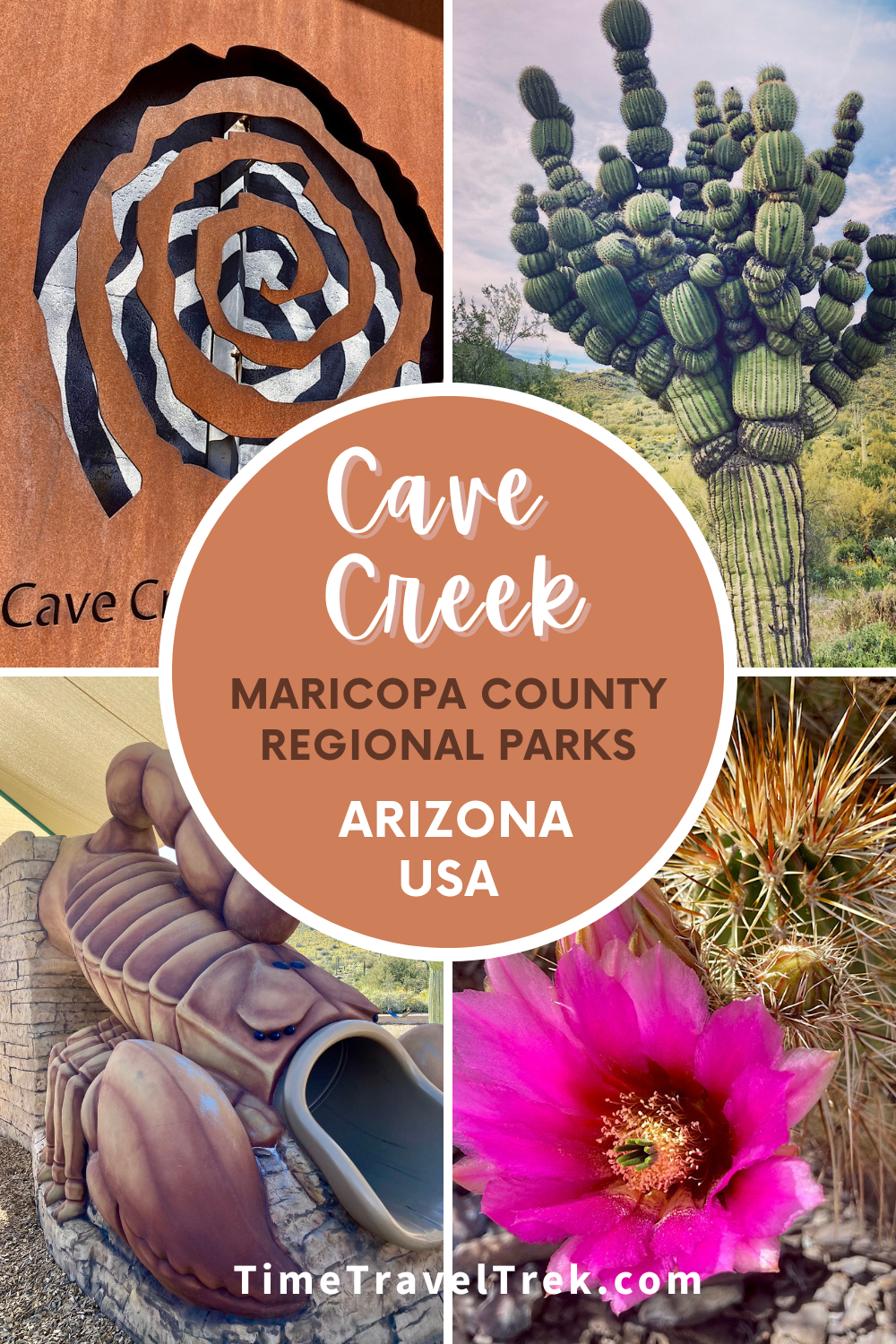
Table of Contents
First Time Visit to Cave Creek Regional Park
What’s not to love about a 2,922-acre park nestled in the desert foothills of the northern part of the Valley of the Sun? Cave Creek Regional is one of the five Maricopa County Regional Parks offering RV adventures in the desert landscapes surrounding Greater Metro Phoenix.
Over the years we’ve thoroughly enjoyed paddling at Lake Pleasant. We’ve appreciated the hiking at White Tank. We’ve loved biking at both Usery and McDowell. The only Maricopa County Regional Park with a campground left to explore was Cave Creek and surrounding area.
Ready to plan your next Arizona RV adventure?
Check out our step-by-step post for RV trip planning.
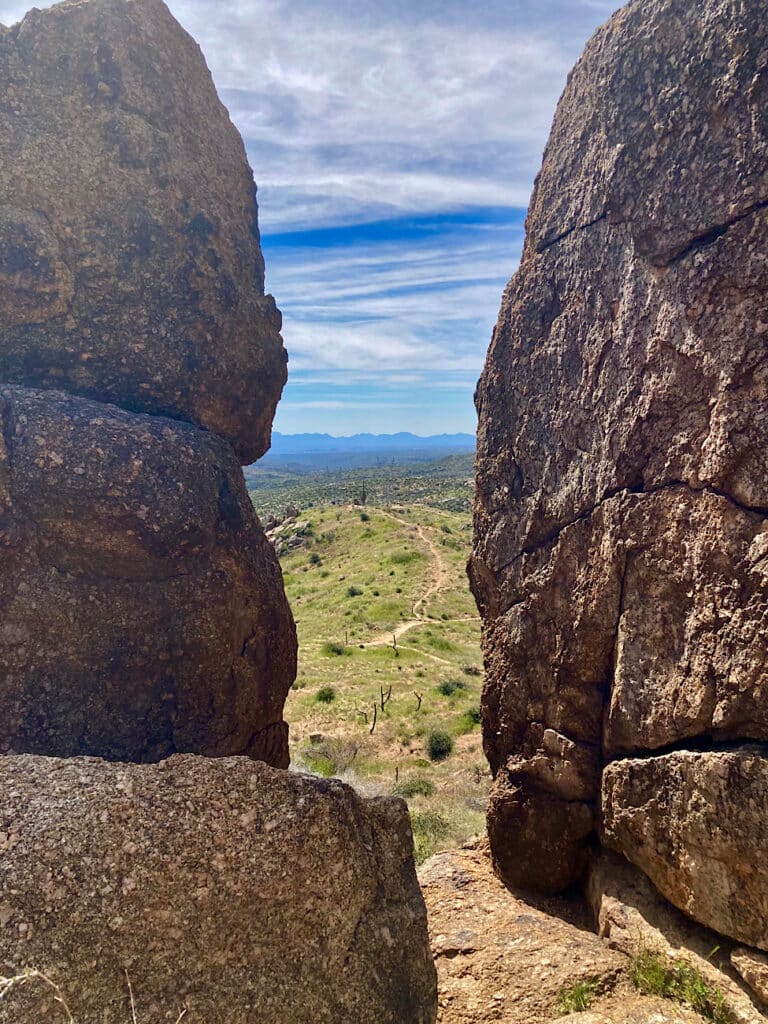
History of Cave Creek Regional Park
Cave Creek Regional Park is steeped in history that dates back thousands of years. The area was originally home to Native American tribes, including the Hohokam people. The Hohokam lived in the region from about 1 A.D. to 1450 A.D.. Evidence of their presence can still be seen in the form of petroglyphs and ancient village sites scattered throughout the surrounding desert.
In the mid-1800s, European settlers arrived, drawn to the area by the promise of gold and other resources. Cave Creek became a bustling hub for mining operations. Remnants of old mines can still be found in the region. The town of Cave Creek lies just outside the park. It grew as a supply center for miners, ranchers, and homesteaders.
In 1963, Cave Creek Regional Park was established as part of the Maricopa County Regional Park System. It was designed to preserve the area’s natural beauty and historical significance while providing outdoor recreational opportunities for the public. Over the years, the park has developed into a popular destination for both locals and tourists. Cave Creek Regional Park offers a window into the natural and cultural heritage of the Sonoran Desert.
Today, the park remains an important conservation area, protecting its diverse ecosystems while serving as a reminder of the people and industries that shaped this region over the centuries.
Did you know? The cave on Cave Creek has a history of human use that dates back 11,000 years! But before you get too excited… the namesake geological feature is only open to the public six times a year during guided cave tours and hikes led by the Desert Foothills Land Trust. Check out their website and book early if interested.
Camping in the park
Our first stop was the Cave Creek Regional Park Campground. All 55 campsites are equipped with electrical and water hookups. It’s a convenient location in the desert environment but close to the conveniences of the city, making it a popular RV destination. Booking ahead is a necessity is you have specific dates in mind.
Quickly setting up camp, we headed out to explore the campground. The washroom block with showers was centrally located and path led to surrounding hiking trails. Of course we had to investigate!
Clay Mine Trail comes with an intriguing tale of one Lelia Pearl Irish and the Pearl Chemical Mine (aka Clay Mine). Irish became incredibly wealthy selling the talc-like layer of rock in the mine as “the perfect mineral drink.” She touted her “Nature’s Own” concoction as being able to cure practically every ailment known to humankind as well as having calcium for the teeth, iron for the blood, and silica for the nails!
We followed Clay Mine to the lower part of Overton trail. It becomes a bit of a dusty and busy horse highway and we had to move off the trail several times as we met up with guided tours. The lower part of Overton took us straight to the Nature Centre and off the horse route.
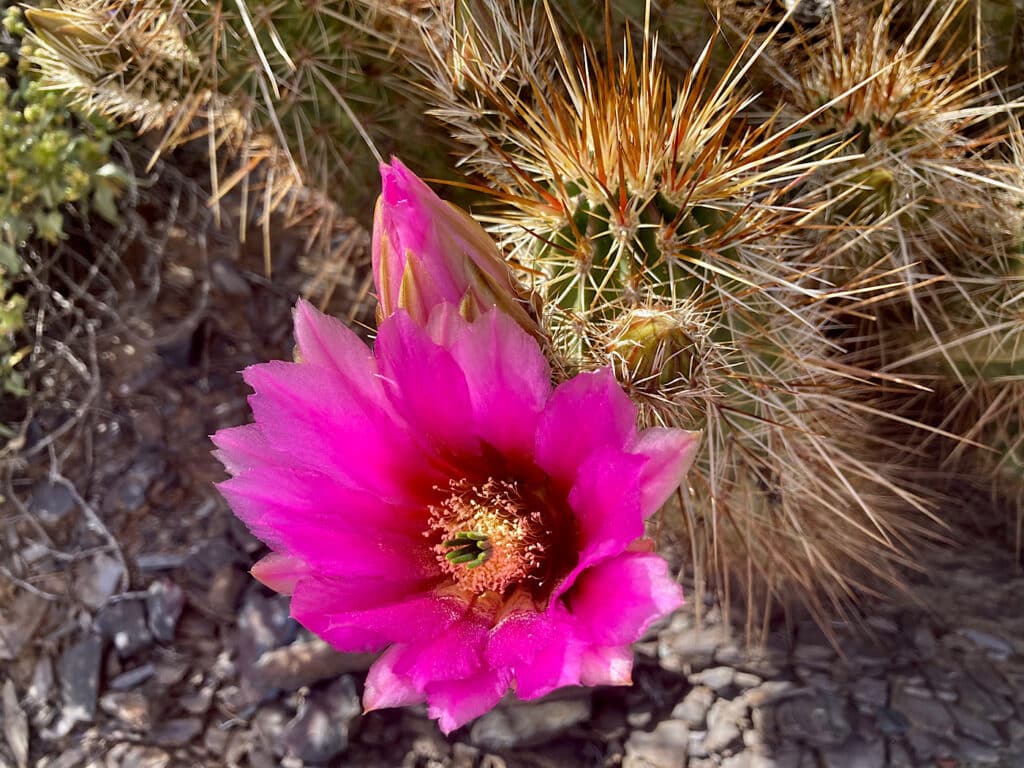
Cave Creek Park Nature Center
One of the park’s highlights is the Cave Creek Nature Center. This is a must-visit spot for anyone interested in learning more about the area’s natural and cultural history. It’s a short walk over on Clay Mine trail from the campground.
The Nature Center offers interactive exhibits that showcase the desert’s ecosystem, native wildlife, and the region’s rich cultural heritage. We checked out the terrariums drawn in by the gila monster. I tried to avoid the diamondback rattlesnake – but it was like a car wreck, I couldn’t look away…
There are various natural history walks and talks available throughout the week, but with limited time, we opted to get information on hiking trails and set out on foot to explore outdoors.
Hiking in Cave Creek Regional Park
The park has over 11 miles (17.7 km) of multi-use trails. With only an hour to sunset on our first day, we chose a loop up Overton Trail and down part of Go John. The trail isn’t challenging.
Bikers and trail runners passed us as we paused for views of the surrounding valleys. Binos in hand, we kept hoping for a coyote or javelina sighting but settled for cactus wrens and gila woodpeckers on the scattered saguaro that survived the ravages of an old wildfire.
The following morning, we headed out from camp back along Clay Mine to Go John, Quartz to Flat Rock, Military to Slate, and back along the paved road to the campground. Snaking up and down and through the hills, this roughly 7-mile (11 km) loop is a scenic way to spend part of a day.
Nearby Adventures: Sears-Kay Ruins
One of the reasons we really wanted to stay at Cave Creek was to explore the area’s cultural history. Located about 15 minutes northeast of Cave Creek Regional Park, the Sears-Kay Ruins is a prehistoric Hohokam site.
Driving up into Tonto National Forest, we parked and climbed the short path (0.5 mile / 0.8 km round-trip) up to the top of a small hill. The surrounding mountain vistas have us wondering what else is out there!
The Sears-Kay ruins are believed to date back over 1,000 years. The site was once a fortified village. We stopped along the path to read the interpretive signs. The signs are a fantastic resource, explaining the layout of the five stone-walled compounds and central plaza as well as possible uses.
We wandered down on social trails through rocky outcrops, stopping to admire the views and photograph spring flowers blooming in profusion. It’s definitely an area we need to explore more!
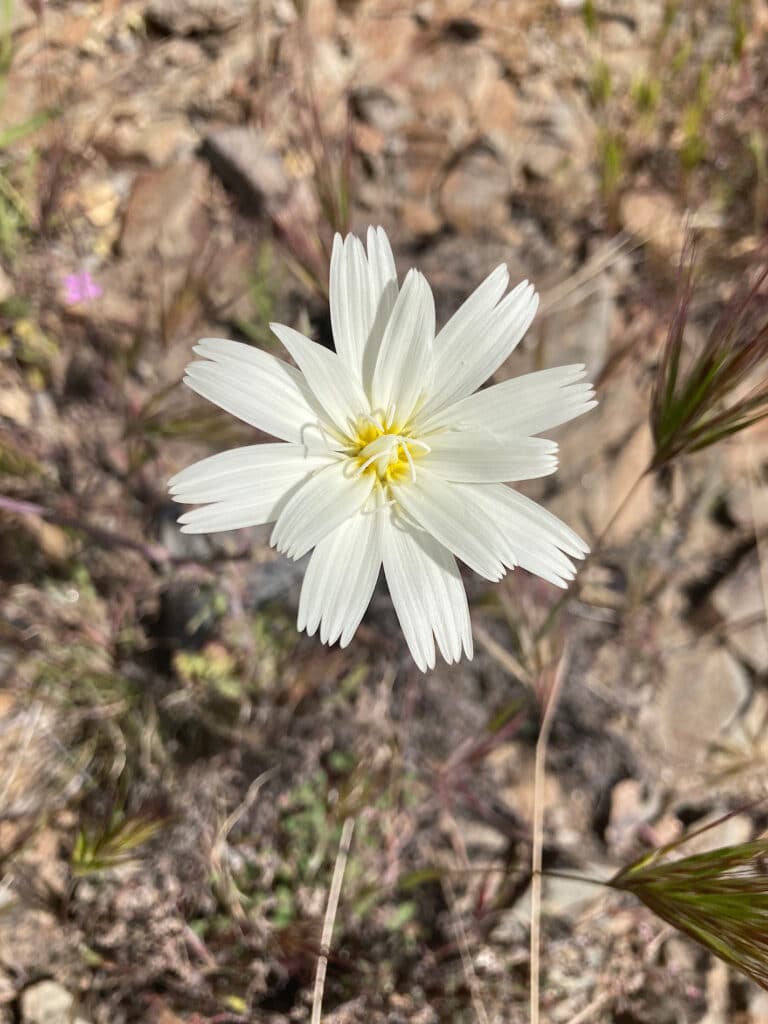
When you go
Cave Creek Regional Park is an ideal destination for anyone looking to experience the beauty and adventure of the Sonoran Desert. With its well-maintained trails, abundant wildlife, and opportunities for camping, hiking, biking, and horseback riding, it’s a perfect spot for both relaxation and exploration. Add in the nearby historic sites like Sears-Kay Ruins, and you’ve got an adventure-filled trip that’s perfect for any desert-loving explorer.
For more park information and maps, check out the Cave Creek Regional Park website.

Plan your next RV adventure with 2026 RV Trip Planner available in our Etsy printables shop.
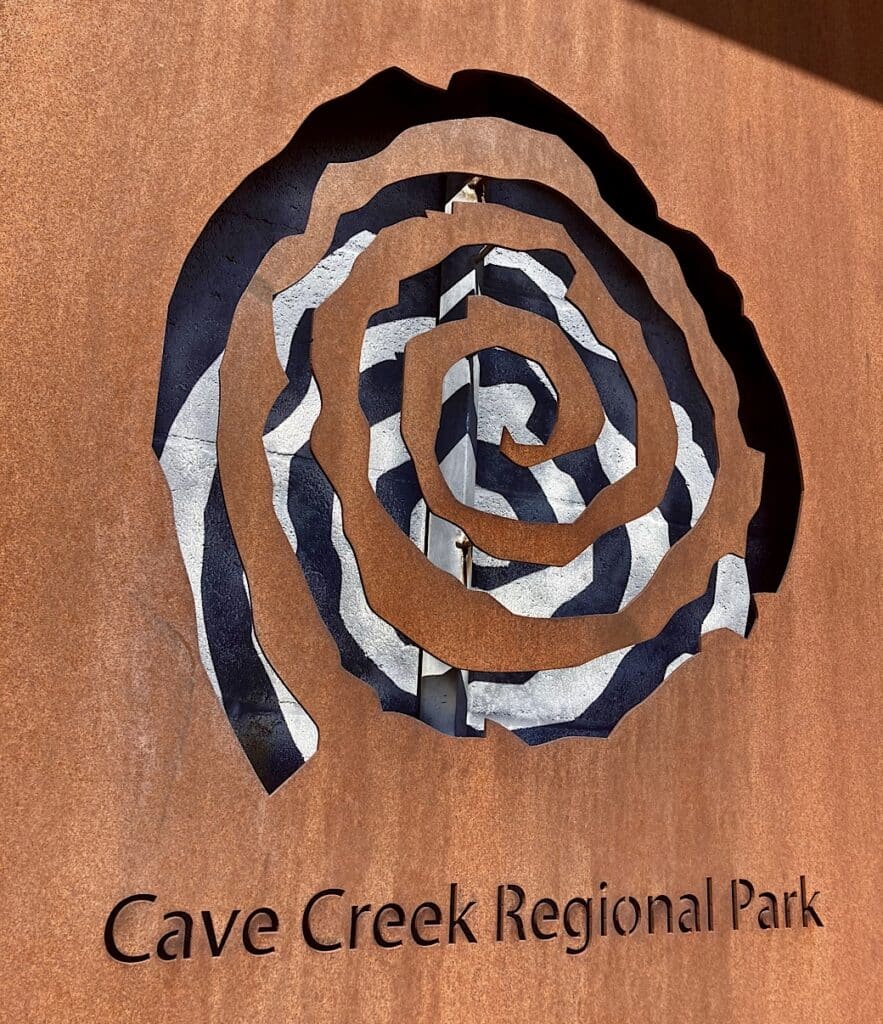
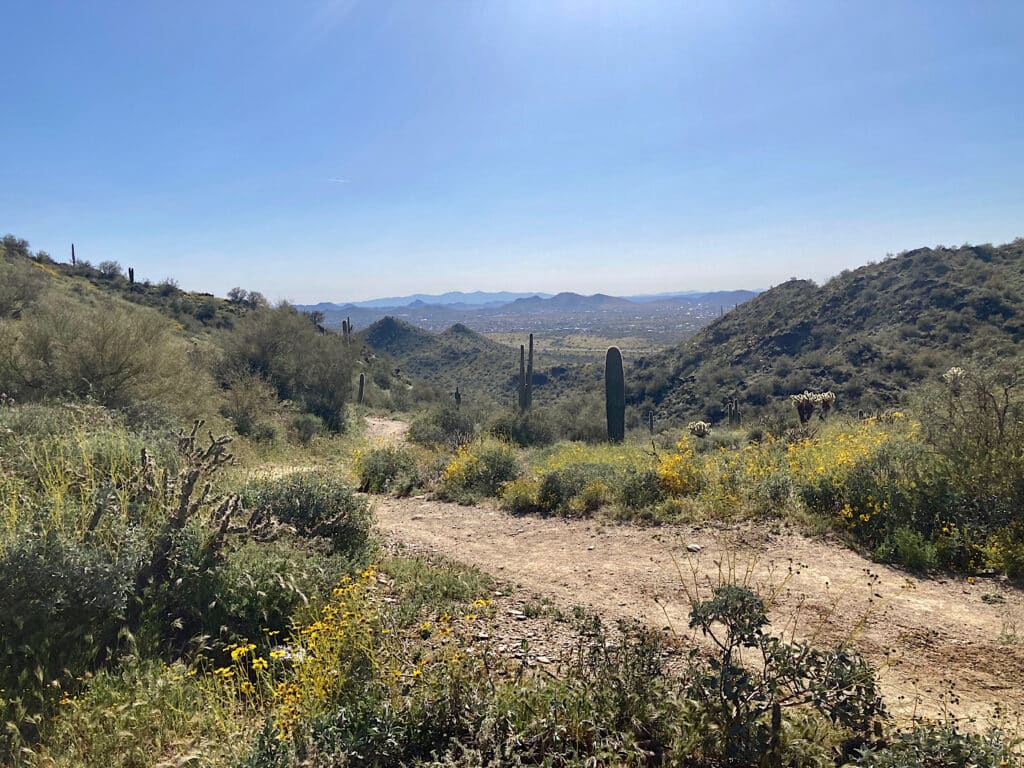
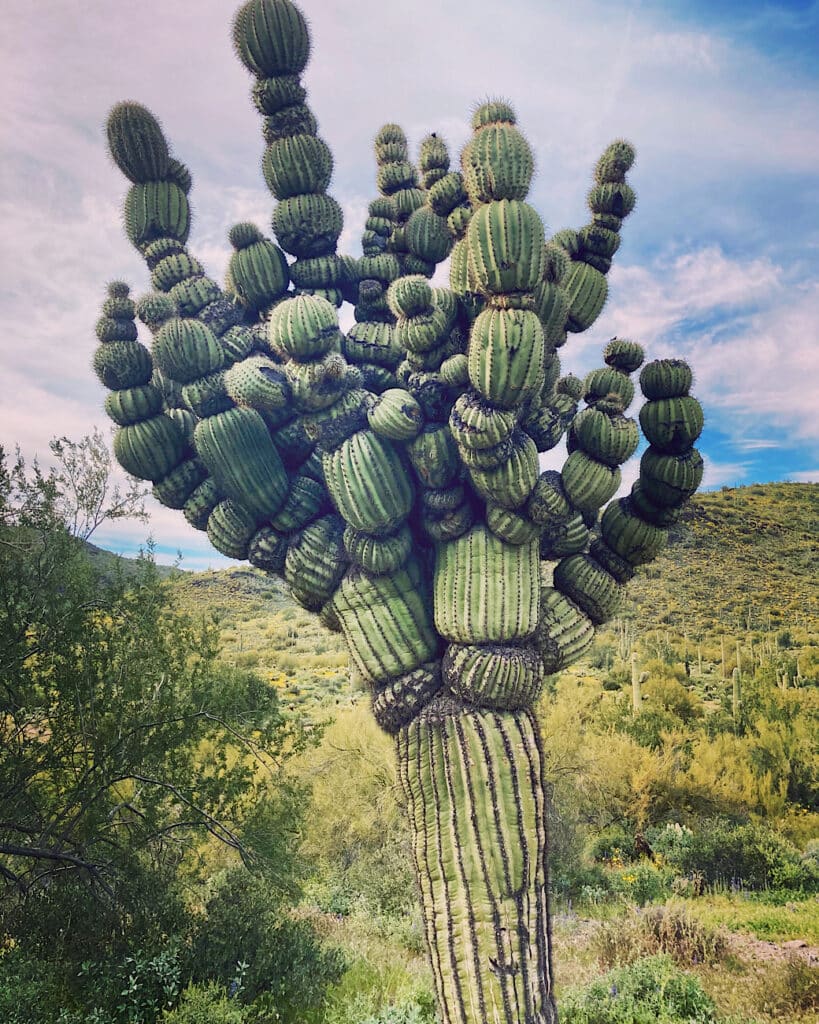
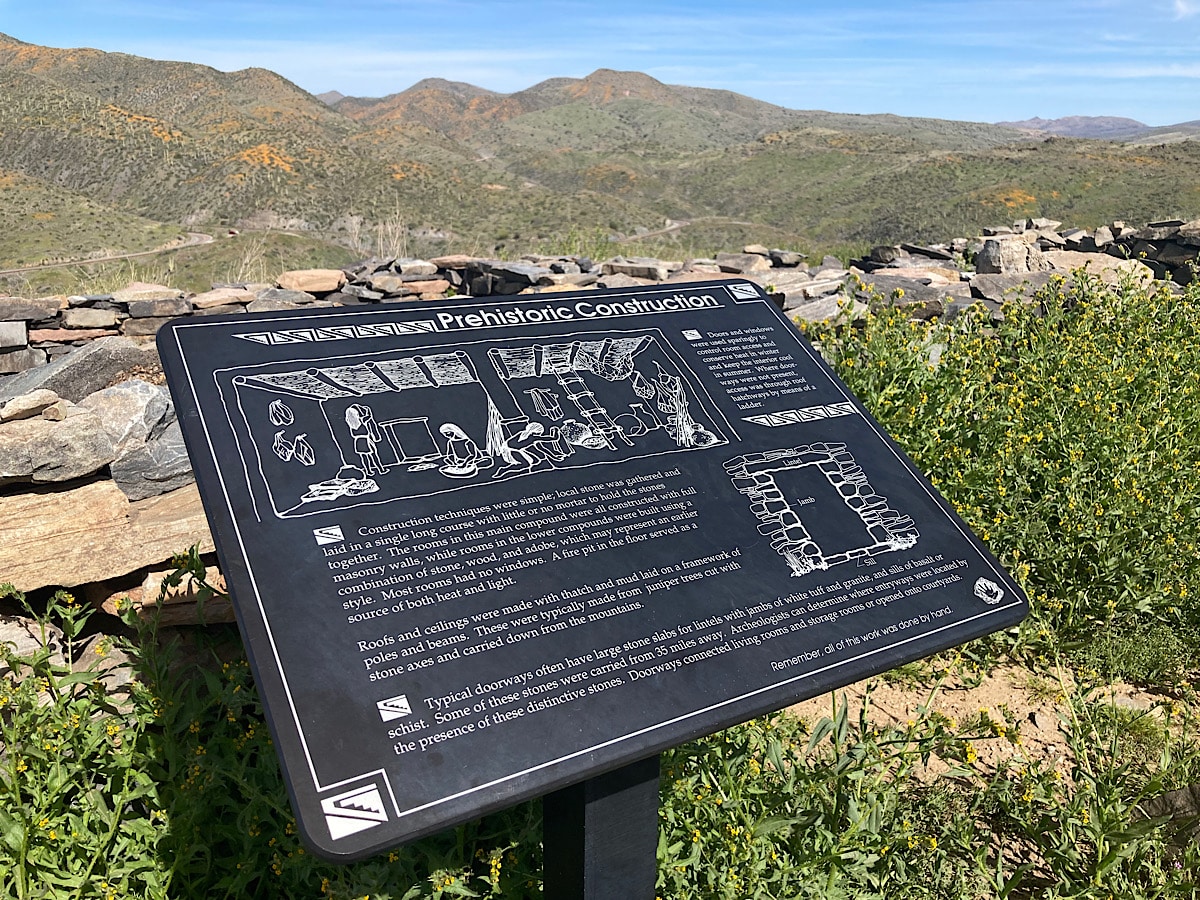
Leave a Reply